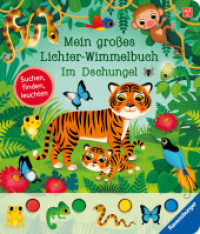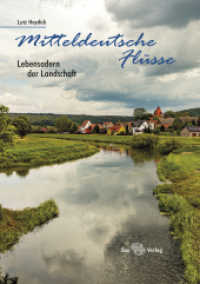- ホーム
- > 洋書
- > 英文書
- > Religion / Ethics
Full Description
Heinz-Wolfgang Kuhn informs about the excavations on et-Tell at the northern end of the Sea of Galilee, directed by the Israeli archaeologist Rami Arav, professor at the University of Nebraska at Omaha and Prof. Richard Freund of the University of Hartford as Project Director. It is now possible to identify the hill with Bethsaida/Julias, which is mentioned, among other texts, in the New Testament gospels (seven times), by the Jewish historian Josephus and in Rabbinical literature. This volume has a twofold purpose: On the one hand, the 15 collected essays in English and German, complemented by the Munich excavation plans, enable the reader to follow the course of the excavations from the very beginning in 1987. The emphasis of the collected essays (beginning with an article published in 1989) lies on the levels of the Hellenistic-Early Roman period, giving a continuous description of the excavations, as they developed over such a long time. On the other hand, one finds here the current data of the excavations, with many important details concerning the Hellenistic-Early Roman period, with the author focussing especially on the first half of the first century CE, the time of Jesus activity at Bethsaida, as can be shown through historical-critical research. In particular, an overview is given of all the coins of the Herods (from Herod the Great to Agrippa II, including five coins of Philip, the ruler at the time of Jesus), of finds of columns, figurines and decorated stones, and there are lists of the so-called Herodian oil lamps and the typical Jewish stone vessels from the Early Roman period. The question of a small pagan Hellenistic-Early Roman temple is discussed, illustrated with many pictures. The excavation plans of the whole area and including all excavated levels from Iron Age IIA on (with an exact grid), extending over 25 years, are unique since they can never be redrawn, due to the normal destruction of nature and ongoing excavations. Heinz-Wolfgang Kuhn informs about the excavations on et-Tell at the northern end of the Sea of Galilee, directed by the Israeli archaeologist Rami Arav, professor at the University of Nebraska at Omaha and Prof. Richard Freund of the University of Hartford as Project Director. It is now possible to identify the hill with Bethsaida/Julias, which is mentioned, among other texts, in the New Testament gospels (seven times), by the Jewish historian Josephus and in Rabbinical literature. This volume has a twofold purpose: On the one hand, the 15 collected essays in English and German, complemented by the Munich excavation plans, enable the reader to follow the course of the excavations from the very beginning in 1987. The emphasis of the collected essays (beginning with an article published in 1989) lies on the levels of the Hellenistic-Early Roman period, giving a continuous description of the excavations, as they developed over such a long time. On the other hand, one finds here the current data of the excavations, with many important details concerning the Hellenistic-Early Roman period, with the author focussing especially on the first half of the first century CE, the time of Jesus activity at Bethsaida, as can be shown through historical-critical research. In particular, an overview is given of all the coins of the Herods (from Herod the Great to Agrippa II, including five coins of Philip, the ruler at the time of Jesus), of finds of columns, figurines and decorated stones, and there are lists of the so-called Herodian oil lamps and the typical Jewish stone vessels from the Early Roman period. The question of a small pagan Hellenistic-Early Roman temple is discussed, illustrated with many colored pictures. The excavation plans of the whole area and including all excavated levels from Iron Age IIA on (with an exact grid), extending over 25 years, are unique since they can never be redrawn, due to the normal destruction of nature and ongoing excavations.








